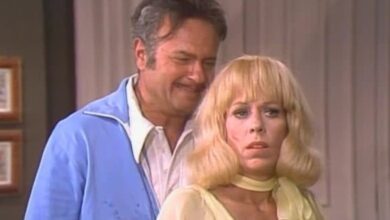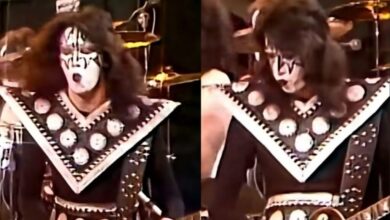Josh Turner offered a deeply heartfelt take on “He Stopped Loving Her Today.”
When George Jones introduced “He Stopped Loving Her Today” to the world in 1980, few could have predicted how completely the song would redefine the emotional potential of country music. Its tragic narrative centers on a man whose devotion lasts far beyond what anyone would consider humanly possible, ending only on the day he is laid to rest. Listeners immediately recognized an authenticity that transcended genre labels, and over four decades later the track remains a benchmark for raw, unfiltered storytelling that still moves first-time audiences to tears.
The song’s plot unfolds like a short novel, unveiling layers of longing, regret, and resignation through minimalist lines that leave nothing wasted. Each verse carefully builds toward the devastating realization that the protagonist’s final gesture of love is his own obituary, an ending so stark it forces the listener to examine the boundaries between devotion and obsession. Musically understated yet vocally intense, Jones’s delivery ensures that every syllable settles deep in the heart, illustrating why critics still rank the performance among the finest in recorded history.
Fast-forward to 2006, when Josh Turner stepped onto the stage at the Cracker Barrel Country Songs of the Year Concert and dared to revisit the masterpiece for a new millennium. Turner’s rich baritone did not merely imitate; it reframed the song, offering a nuanced gravity that honored Jones while enticing younger fans unfamiliar with classic country’s darker corners. His interpretation bridged a generational gap, proving the narrative’s universality and demonstrating that truly great songwriting can survive any stylistic evolution the genre undergoes.
Historically, the single rescued Jones’s career at a moment when personal struggles threatened to eclipse his artistry. Winning a Grammy and topping multiple charts, the track reaffirmed the commercial viability of deeply emotional material at a time when upbeat production often dominated airwaves. More importantly, it set a new gold standard for narrative songwriting, inspiring artists from Garth Brooks to Chris Stapleton to embrace vulnerability rather than shy away from it, and encouraging countless lyricists to dig more deeply into the human psyche.
Culturally, the song’s influence extends well beyond traditional country boundaries. Its exploration of unresolved grief and steadfast affection offers a mirror to anyone who has ever loved without reciprocation or closure. In an era preoccupied with quick fixes and instant gratification, the track stands as a monument to the slow burn of lifelong yearning, reminding listeners that emotional complexity is not only acceptable but also immensely relatable, regardless of personal background or musical preference.
Modern discussions around mental health make the narrative feel even more urgent. The protagonist’s refusal—or inability—to move past heartbreak underscores the importance of processing loss through healthy channels rather than allowing sorrow to calcify into an identity. Therapists frequently cite the song when illustrating how suppressed feelings can manifest in extreme ways, while fans find solace in recognizing that their own grief, however overwhelming, has been voiced so eloquently in popular culture.
Digital platforms have breathed new life into the ballad, ushering it onto playlists labeled “Sad Songs to Cry To” and “Ultimate Heartbreak.” Viral reaction videos often capture first-time listeners sitting in stunned silence as the final verse lands, a testament to the composition’s undiminished power. Each upload sparks lively comment threads where strangers trade personal stories of loss, proving that the emotions Jones laid bare in 1980 continue to echo vividly through earbuds and smart speakers worldwide.
TikTok, in particular, has facilitated a wave of short-form covers that reimagine the tune through varied lenses—ukulele renditions, a cappella harmonies, and even lo-fi remixes backed by rain sounds. Rather than diluting the original meaning, these reinterpretations highlight its adaptability, underscoring how a well-crafted narrative can survive radical changes in production style and still feel honest. The hashtag challenges that accompany these posts routinely climb trending charts, pulling the song back into cultural conversations year after year.
Many listeners choose to engage more intimately by pairing the song with milestones in their own lives. Some couples use it as a memorial anthem during anniversaries spent apart because of military service or relocation; others include it in playlists curated for grief counseling sessions, finding that its starkness helps initiate difficult dialogues. These personal connections reinforce the track’s legacy, turning what began as a single man’s story into a communal exploration of how humans grapple with endless love and irreversible loss.
Your perspective matters in sustaining that legacy. Whether you encountered the song in the backseat of a family road trip, discovered it through a streaming algorithm, or heard Josh Turner’s rendition before circling back to Jones’s original, your memory adds another layer to its collective impact. Share those anecdotes freely—each one affirms that music’s ability to articulate grief remains invaluable, and each testimony ensures that future generations will continue to find comfort, catharsis, and connection in this timeless lament.





